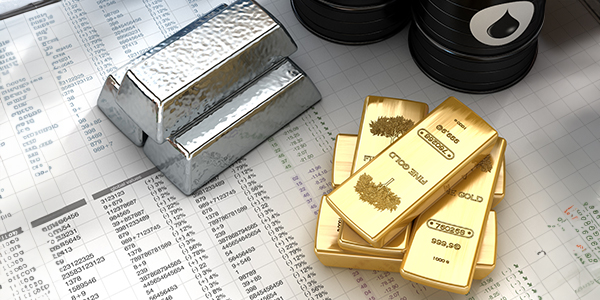
U.S. Global Investors Reports Results for the Third Quarter of 2013 Fiscal Year
SAN ANTONIO—May 8, 2013—U.S. Global Investors, Inc. (NASDAQ: GROW), a boutique registered investment advisory firm specializing in natural resources and emerging markets, recorded net income of $41,167, or 0 cents per share, on revenues of $4.77 million for the quarter ended March 31, 2013.
Net income for the third quarter of fiscal year 2012 was $487,138, or 3 cents per share, on revenues of $5.54 million.
Average assets under management were $1.56 billion for the quarter ended March 31, 2013, compared to an average of $1.97 billion the same quarter a year ago, a decrease of about 21 percent. Period-end assets under management stood at $1.49 billion as of March 31, 2013, versus $1.89 billion under management as of March 31, 2012.
“Actively managed funds that invest in emerging markets, gold and natural resources continue to remain largely out of favor as investors focused on income-yielding stock and bond ETFs. As a result, assets in U.S. Global’s resource-related funds declined,” says Frank Holmes, U.S. Global Investors CEO. “On a positive note, effective March 31, 2013, U.S. Global closed on its strategic investment of a 50 percent stake in Toronto-based Galileo Global Equity Advisors.
“Galileo manages 320 million in Canadian dollars and is a successful, growing asset management firm,” says Holmes. “Its flagship fund recently received the 2013 Lipper Fund Award for ’Best Canadian Small/Mid Equity’ fund over five years. The fund is also ranked 5 stars by Morningstar among Canadian small/mid cap equity funds and pays monthly dividends to its shareholders.
“In addition to the Galileo investment, we continue to look for future accretive acquisition and investment opportunities to strengthen our business, focusing on improving our return on capital,” says Holmes. “We also are investing in our own company by buying back GROW shares.”
At the beginning of calendar year 2013, the company began repurchasing outstanding common stock on the open market. As of March 31, 2013, U.S. Global has repurchased 22,203 class A shares using cash of $84,983. The company is using an algorithm to purchase shares on down days, following the rules and regulations that restrict the amounts and times when shares can be purchased on any one day, such as at the opening of the day and in the last half-hour of trading. The share repurchase plan expires at the end of the calendar year 2013 but may be suspended or discontinued at any time.
To more effectively allocate capital, U.S. Global lowered the monthly dividend from $0.02 per share to $0.005 per share, beginning in 2013. This equates to an annual yield of 2.1 percent on an annual basis at the May 7, 2013, closing price of $2.85 per share.
As of March 31, 2013, the company had net working capital of approximately $24.1 million. Cash and cash equivalents totaled $19.1 million and trading and available-for-sale investments totaled $14.2 million as of the end of the quarter. The company has had no long-term liabilities and owns its headquarters building.
U.S. Global Investors’ Changes to Funds
To help drive asset growth and improve benefits to shareholders, the company previously announced changes to the funds. One change includes the elimination of all redemption fees charged to equity fund shares held longer than seven days. For those equity fund shares held seven days or less, fees have been substantially reduced up to 90 percent, resulting in a charge of 0.05 percent, or a fee of $5 per $10,000 investment.
For institutional share classes, the minimum initial investment is now $1 million, reduced from $5 million.
“We continue to explore ways to make the funds more competitive with the market’s preference for ETFs and dividend-paying investments, including the possibility of making monthly payouts to shareholders and creating our own active ETFs,” says Holmes.
Market Commentary
With U.S. companies buying back shares and issuing more dividends, domestic stocks have been rising significantly since the beginning of 2013. In February, the Dow Jones Industrial Average hit 14,000 for the first time since 2007, and has been slowly ticking higher. The S&P 500 Index has also been hitting all-time highs in this period.
With the renewed confidence in the U.S. market, gold bullion declined, dropping to a price not seen in more than two years.
“On a year-over-year percentage change basis, gold registered a negative 2.6 standard deviation move on our oscillator chart on April 15,” says Holmes. “While minor corrections in the gold price happen frequently, a move this severe has not occurred over the previous 2,610 trading days.”
The company believes this is a short-term correction in a long-term secular bull market for gold. The drivers for gold are still in place, including the rising balance sheets of the Federal Reserve, the Bank of Japan and the European Union. Research shows that the Fed’s balance sheet has a very high correlation to the rise in gold price. Negative real interest rates remain, which have historically been highly correlated to the price of gold.
“Soon after the correction, we wrote about the trend of physical gold buyers taking advantage of the price break,” says Holmes. “From April 1 through April 18, buyers scooped up 153,000 ounces from the U.S. Mint, which was the highest in nearly three years.”
This buying trend isn’t only occurring in the U.S. In Bangkok, Thailand, for example, crowds of buyers were filling stores, eagerly waiting in multiple lines to purchase gold jewelry and coins. According to The Wall Street Journal, “Gold shops from Tokyo to Dubai have witnessed frantic buying of the coins, alongside other items such as gold wedding bracelets. The surge has been triggered by cheaper prices.”
China Daily reported a similar buying enthusiasm occurring in jewelry stores in Beijing, Shanghai and Guangzhou. Shanghai’s newspaper reported that “while gold markets in the United States and Europe saw panic selling, sales of gold bars and jewelry jumped in China as buyers viewed the lower prices as an opportune moment to invest.”
“Over the past several months, the Love Trade driven by jewelry demand from China and India had been subdued. China’s GDP slowed more than people had anticipated and the GDP per income historically has a high correlation to the price of gold,” says Holmes. “The surtax in India also hurt demand, so these buyers waited for the price to fall to an attractive level before they returned to buy gold. With the significant price decline in gold, we’ve effectively seen a transfer from the weak hands of the ETF buyers to the strong hands of the Love Trade.”
“As always, we tell investors to make sure their portfolio has a modest weighting of 5 to 10 percent in gold and gold stocks and rebalance annually,” says Holmes.
Earnings Webcast Information
The company has scheduled a webcast for 7:30 a.m. Central time on Thursday, May 9, 2013, to discuss the company’s key financial results for the quarter. Frank Holmes will be accompanied on the webcast by Susan McGee, president and general counsel, and Catherine Rademacher, chief financial officer. Click here to register or visit www.usfunds.com. The earnings presentation can also be accessed by dialing 1(888) 895-5479. The confirmation number is 34802318. Please dial in at least 5 minutes prior to the start of the call.
| Three months ended | |||
|---|---|---|---|
| 3/31/2013 | 3/31/2012 | ||
| Revenues | $4,772,251 | $5,538,127 | |
| Expenses | 4,686,484 | 4,742,702 | |
| Income before taxes | 85,767 | 795,425 | |
| Tax expense | 44,600 | 308,287 | |
| Net income | $41,167 | $487,138 | |
| Earnings per share (basic and diluted) | $0.00 | $0.03 | |
| Avg. common shares outstanding (basic) | 15,490,020 | 15,448,100 | |
| Avg. common shares outstanding (diluted) | 15,490,020 | 15,448,518 | |
| Avg. assets under management (billions) | $1.56 | $1.97 | |
About U.S. Global Investors, Inc.
U.S. Global Investors, Inc. (www.usfunds.com) is a registered investment adviser that focuses on profitable niche markets around the world. Headquartered in San Antonio, Texas, the company provides advisory, transfer agency and other services to U.S. Global Investors Funds and other clients.
With an average of $1.56 billion in assets under management in the quarter ended March 31, 2013, U.S. Global Investors manages domestic and offshore funds offering a variety of investment options, from emerging markets to money markets.
Forward-Looking Statements and Disclosure
This news release and other statements by U.S. Global Investors may include certain “forward-looking statements” including statements relating to revenues, expenses and expectations regarding market conditions. You can identify these forward-looking statements by the use of words such as “outlook,” “believes,” “expects,” “potential,” “opportunity,” “seeks,” “anticipates” or other comparable words. Such statements involve certain risks and uncertainties and should be read with corporate filings and other important information on the company’s website, www.usfunds.com, or the Securities and Exchange Commission’s website at www.sec.gov.
These filings, such as the company’s annual report and Form 10-K, should be read in conjunction with the other cautionary statements that are included in this release. Future events could differ materially from those anticipated in such statements and there can be no assurance that such statements will prove accurate and actual results may vary. The company undertakes no obligation to publicly update or review any forward-looking statements, whether as a result of new information, future developments or otherwise.
The Galileo Mutual Funds are not offered for sale in the United States.
All opinions expressed and data provided are subject to change without notice. Some of these opinions may not be appropriate to every investor. The S&P 500 Stock Index is a widely recognized capitalization-weighted index of 500 common stock prices in U.S. companies. The Dow Jones Industrial Average is a price-weighted average of 30 blue chip stocks that are generally leaders in their industry. Standard deviation is a measure of the dispersion of a set of data from its mean. The more spread apart the data, the higher the deviation. Standard deviation is also known as historical volatility.































